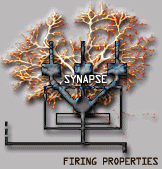 ARTIFICIAL INTELLIGENCE AND PROBLEM SPACES
ARTIFICIAL INTELLIGENCE AND PROBLEM SPACES  ARTIFICIAL INTELLIGENCE AND PROBLEM SPACES
ARTIFICIAL INTELLIGENCE AND PROBLEM SPACES In our physical-psychophysical narrative of danger stimuli, the brain and the mind should ultimately be understood according to how the neural subnets contribute to an overall society-of-the-mind or parliament-of-the-mind structure (Marvin Minsky, Daniel Dennett). The idea of attributing constituent parts to a complex mental activity was already clear at late 1950s through the efforts to develop artificial intelligence. The General Problem Solver (GPS), for example, was a computer program developed by Alan Newell and Herbert Simon, capable, for instance, of proving theorems that had been shown previously to form the basis of mathematics. GPS was able to prove theorems by breaking the problem into small steps and searching systematically within the "problem space" of possible solutions.
The ability to program a computer to perform tasks that seemed to involve the very highest levels of human reasoning had a dramatic effect upon psychophysics. Alan Newell, decades later, explained his great project named Soar as a tentative model of cognition, based on figuring out in detail the operating system of such a "problem space". One important consequence was to stimulate efforts to analyze, also in detail, the constituent operations involved in human thought. The "problem space" hypothesis, of artificial intelligence, when applied to the human mind, may involve either a neural subnet space (which is Cricks hypothesis) or a parliament-of-the-mind space excluding from it the space where no solution to the problem appears a priori.
A new technology was born with the aim of producing intelligence following the leading case of the GPS, that is, the aim of artificial intelligence. That has not happened. Initial efforts to create computers with mind-like responses have failed completely. Part of the reason for this failure was
Now some researchers (Beer) claim to imitate with appropiate neural networks the operating systems of invertebrate behavior and find out how to evolve from them towards the ultimate aim. The remainig part of the reason is just ill-defined, it is Chalmers' hard problem.
Quite surely all we can say on the subject is tentative until the mature moment of finding the actual neural correlate of consciousness, whether it is an architecture (for instance, a distributed activation system), a concrete "theater", a little of both, or a phenomenon independent of any bodily contribution.
NEXT
OTHER
2.feb.1999
Pulsar tecla de vuelta
Glosario de Carlos von der Becke, where some specialized words are explained.